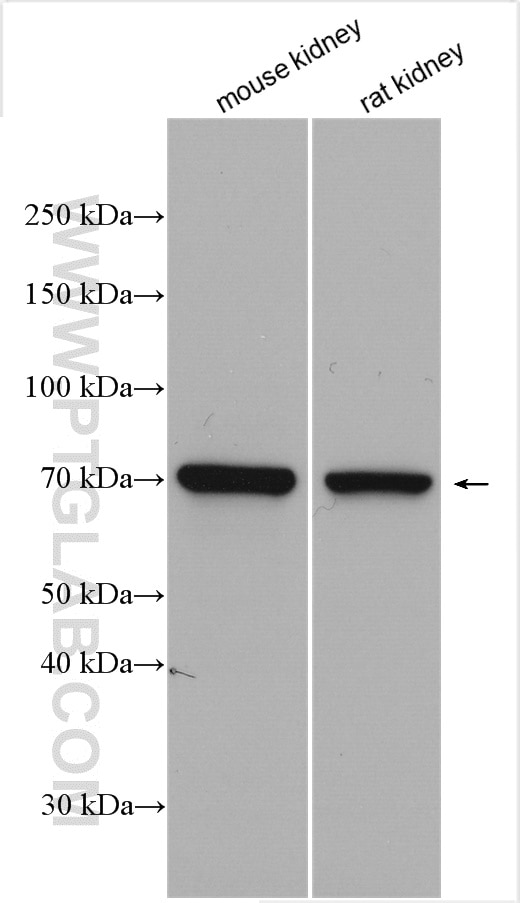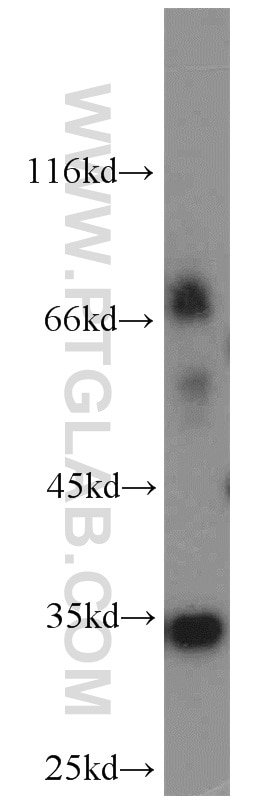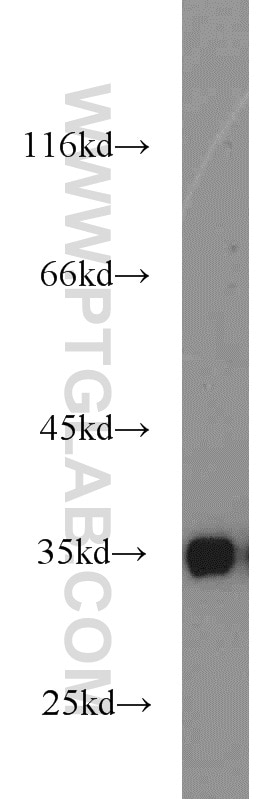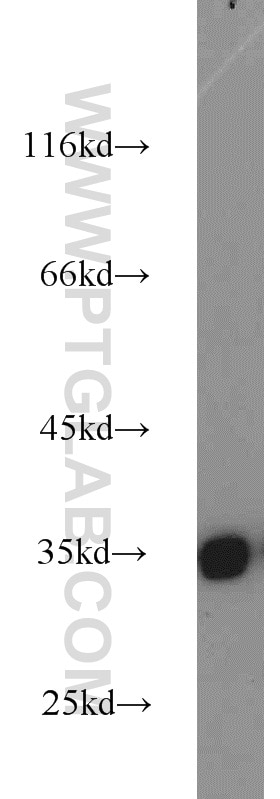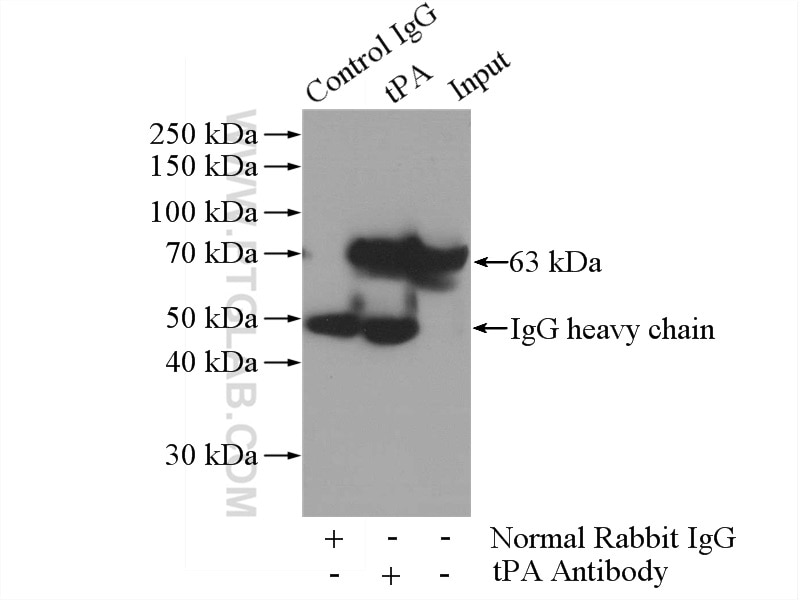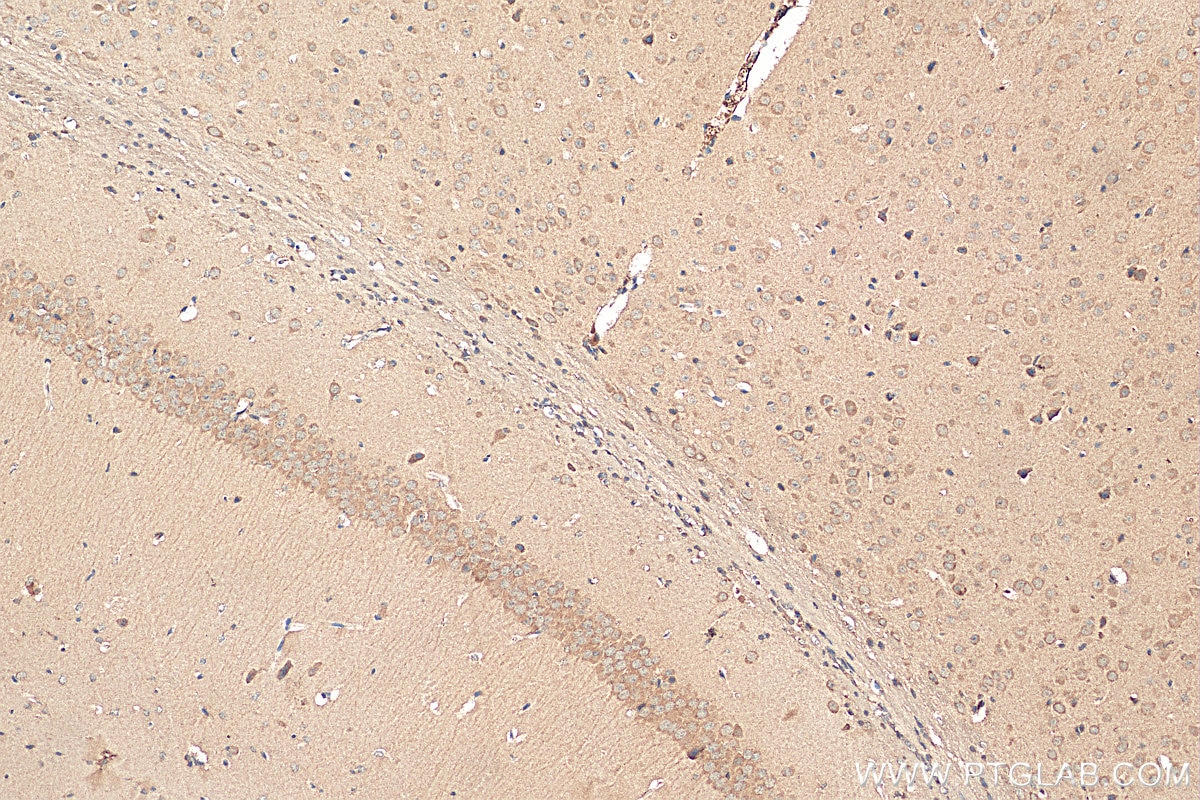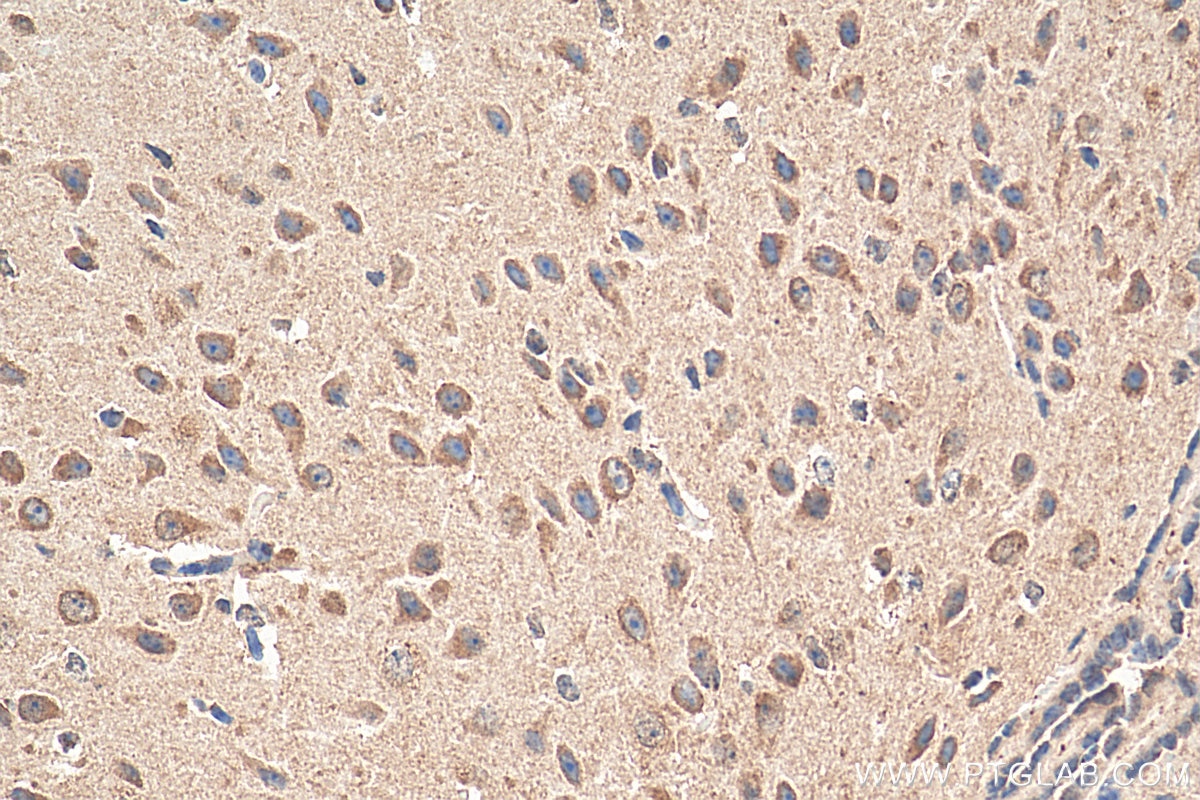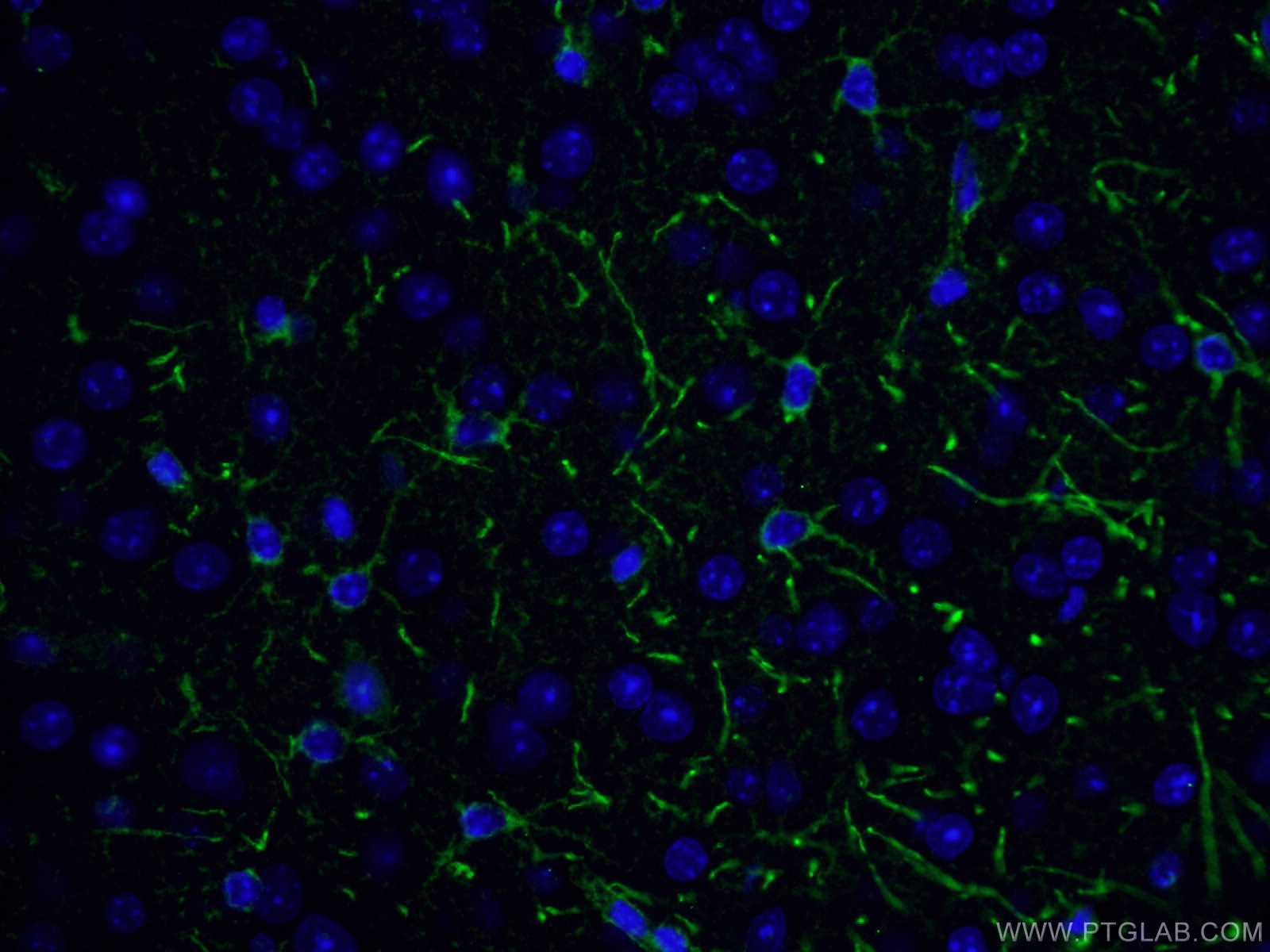- Phare
- Validé par KD/KO
Anticorps Polyclonal de lapin anti-tPA
tPA Polyclonal Antibody for WB, IP, IF, IHC, ELISA
Hôte / Isotype
Lapin / IgG
Réactivité testée
Humain, rat, souris
Applications
WB, IHC, IF-P, IP, ELISA
Conjugaison
Non conjugué
N° de cat : 10147-1-AP
Synonymes
Galerie de données de validation
Applications testées
| Résultats positifs en WB | tissu rénal de souris, tissu pancréatique de souris, tissu rénal de rat |
| Résultats positifs en IP | tissu rénal de souris |
| Résultats positifs en IHC | tissu cérébral de souris, il est suggéré de démasquer l'antigène avec un tampon de TE buffer pH 9.0; (*) À défaut, 'le démasquage de l'antigène peut être 'effectué avec un tampon citrate pH 6,0. |
| Résultats positifs en IF-P | tissu cérébral de souris, |
Dilution recommandée
| Application | Dilution |
|---|---|
| Western Blot (WB) | WB : 1:500-1:3000 |
| Immunoprécipitation (IP) | IP : 0.5-4.0 ug for 1.0-3.0 mg of total protein lysate |
| Immunohistochimie (IHC) | IHC : 1:50-1:500 |
| Immunofluorescence (IF)-P | IF-P : 1:50-1:500 |
| It is recommended that this reagent should be titrated in each testing system to obtain optimal results. | |
| Sample-dependent, check data in validation data gallery | |
Applications publiées
| KD/KO | See 1 publications below |
| WB | See 13 publications below |
| IHC | See 5 publications below |
| IF | See 9 publications below |
Informations sur le produit
10147-1-AP cible tPA dans les applications de WB, IHC, IF-P, IP, ELISA et montre une réactivité avec des échantillons Humain, rat, souris
| Réactivité | Humain, rat, souris |
| Réactivité citée | rat, Humain, souris |
| Hôte / Isotype | Lapin / IgG |
| Clonalité | Polyclonal |
| Type | Anticorps |
| Immunogène | tPA Protéine recombinante Ag0200 |
| Nom complet | plasminogen activator, tissue |
| Masse moléculaire calculée | 57 kDa |
| Poids moléculaire observé | 32-35 kDa, 65 kDa |
| Numéro d’acquisition GenBank | BC002795 |
| Symbole du gène | tPA |
| Identification du gène (NCBI) | 5327 |
| Conjugaison | Non conjugué |
| Forme | Liquide |
| Méthode de purification | Purification par affinité contre l'antigène |
| Tampon de stockage | PBS avec azoture de sodium à 0,02 % et glycérol à 50 % pH 7,3 |
| Conditions de stockage | Stocker à -20°C. Stable pendant un an après l'expédition. L'aliquotage n'est pas nécessaire pour le stockage à -20oC Les 20ul contiennent 0,1% de BSA. |
Informations générales
Plasminogen activator, tissue (PLAT, synonyms: TPA, T-PA) is a tissue-type plasminogen activator, a secreted serine protease which converts the proenzyme plasminogen to plasmin, a fibrinolytic enzyme. Tissue-type plasminogen activator is synthesized as a single chain which is cleaved by plasmin to a two chain disulfide linked protein (33 kDa and 32 kDa). PLAT enzyme plays a role in cell migration and tissue remodeling. Increased enzymatic activity causes hyperfibrinolysis, which manifests as excessive bleeding; decreased activity leads to hypofibrinolysis which can result in thrombosis or embolism. tPA has 4 isoforms produced by alternative splicing with the MW of 63 kDa, 33 kDa, 57 kDa and 44 kDa.
Protocole
| Product Specific Protocols | |
|---|---|
| WB protocol for tPA antibody 10147-1-AP | Download protocol |
| IHC protocol for tPA antibody 10147-1-AP | Download protocol |
| IF protocol for tPA antibody 10147-1-AP | Download protocol |
| IP protocol for tPA antibody 10147-1-AP | Download protocol |
| Standard Protocols | |
|---|---|
| Click here to view our Standard Protocols |
Publications
| Species | Application | Title |
|---|---|---|
Redox Biol FUNDC1-dependent mitophagy induced by tPA protects neurons against cerebral ischemia-reperfusion injury.
| ||
J Neurosci Tissue plasminogen activator contributes to alterations of neuronal migration and activity-dependent responses in fragile x mice. | ||
Aging (Albany NY) NFAT5 directs hyperosmotic stress-induced fibrin deposition and macrophage infiltration via PAI-1 in endothelium. | ||
Glia Lipoprotein receptor loss in forebrain radial glia results in neurological deficits and severe seizures. | ||
Sci Rep Development of a Biomimetic Chondroitin Sulfate-modified Hydrogel to Enhance the Metastasis of Tumor Cells. | ||
Cell Cycle tPA promotes the proliferation of lung fibroblasts and activates the Wnt/β-catenin signaling pathway in idiopathic pulmonary fibrosis. |
Avis
The reviews below have been submitted by verified Proteintech customers who received an incentive forproviding their feedback.
FH nuo (Verified Customer) (08-22-2021) | There is a band at around 64 kD as expected, although there were other nonspecific bindings.
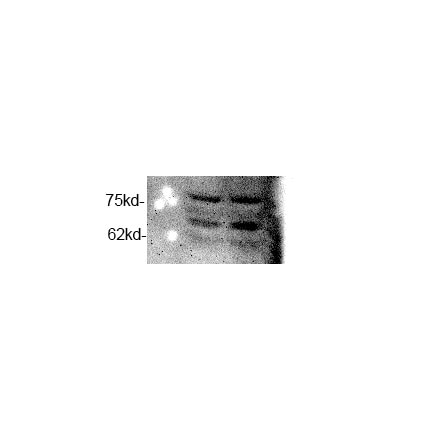 |
